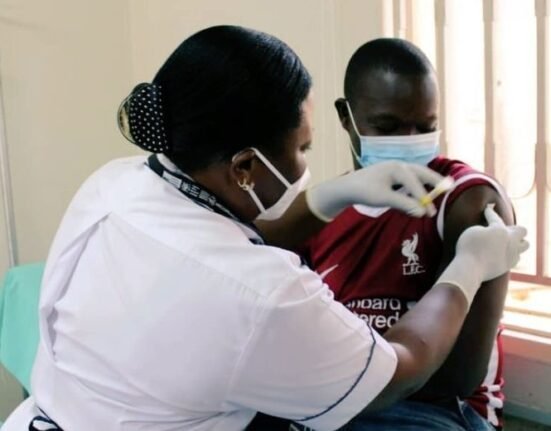HQ Team
March 31, 2024: US-based Varda Space Industries’ spacecraft in orbit crystallised a metastable form of a drug for HIV/AIDS — furthering the feasibility of processing pharmaceuticals in microgravity.
The California-headquartered startup’s spacecraft was brought to orbit on a SpaceX Falcon 9 rocket on Transporter 8 launched on June 12th, 2023.
In-orbit crystallisation experiments were initiated on June 29, 2023. On February 21, 2024, the company’s W-1 capsule returned to Earth.
The capsule, carrying the HIV protease inhibitor drug ritonavir, remained in orbit for about eight months before landing at the Utah Test and Training Range.
‘We’re excited to share the results of our first pharmaceutical process in microgravity. Our processing hardware performed flawlessly,” the company stated in an X-post on March 20.
“Our mission is to now enable cost-effective high-cadence access to enable next-generation therapeutics.”
‘Cooked real good’
Varda Space cofounder Delian Asparouhov said in a separate thread: “We have a detailed scientific paper you can read through, or the one-liner is…Them space drugs cooked real good.”.
“The metastable Form III of ritonavir was successfully crystallised in orbit and subsequentially recovered after reentry to Earth,” according to a pre-print paper.
A metastable form is not a physically stable one and will convert gradually, rapidly or abruptly to the stable form.
Ritonavir is an antiretroviral oral medication used along with other drugs in a combination called highly active antiretroviral therapy.
It boosts the potency of other inhibitors and is used for treating hepatitis and Covid-19 patients.
Varda stated that the test samples “and passive controls containing each of the anhydrous forms of ritonavir medicine and amorphous exhibited excellent stability.”
In-space processing
“By providing a detailed experimental dataset centred on survivability, we pave the way for the future of in-space processing of medicines that enable the development of novel drug products on Earth and benefit long-duration human exploration initiatives,” according to the paper.
Varda Space is eyeing to make drugs in microgravity, which may lower the costs, and the company is one step closer to achieving the goal.
“This is our first step in commercializing microgravity drug development.
Together with our hypergravity platform, Varda’s rapidly advancing the landscape for drug development using microgravity,” according to the X-post.
Early proof-of-concept demonstrations were conducted on parabolic flights and extended microgravity platforms such as the International Space Station.
They have demonstrated the potential benefits of in-space microgravity crystallisation for better understanding polymorphism and for supporting pathfinding routes towards novel drug formulations.
The physical stability of therapeutics processed in space has not been sufficiently investigated.
Environmental factors including vibration, acceleration, radiation, and temperature, if not addressed could impact the feasibility of in-space drug processing.
Polymorphic control
Polymorphic control of active pharmaceutical ingredients (API) is a key concern for safety, manufacturability, and dosing.
Understanding stability and form conversion risks in space environments is a key concern for future space-based medicines and microgravity development.
Stability testing of pharmaceuticals stored on the International Space Station had highlighted that over two years, a shift in potency was observed – though well within the expected shelf-life of the pharmaceuticals.
Previous studies were limited in scope and focused primarily on chemical degradation during extended storage in orbit.
Those studies did not sufficiently address the questions on the influence of launch and re-entry on the state of drug materials.
Ritonavir was selected for its challenging polymorphic landscape and its suitability for melt and cool crystallisation.
Reproducible bioavailability
The US Food and Drug Administration and the International Conference on Harmonization classify anhydrous, hydrate and solvate forms as polymorphs.
Drugs with low water solubility are predisposed to poor and variable oral bioavailability and, therefore, to variability in clinical response, that might be overcome through an appropriate formulation of the drug.
Polymorphs (anhydrous and solvate/hydrate forms) may resolve these bioavailability problems, but they can be a challenge to ensure physicochemical stability for the entire shelf life of the drug product.
It is necessary to monitor the polymorphic transformation during formulation, manufacturing, and storage of dosage forms to ensure reproducible bioavailability — the ability of a drug to be available in an appropriate concentration at the site of action— after administration.
From the capsule in Utah, the crystallised and control samples were sent in a temperature-controlled environment to the Improved Pharma facility in West Lafayette, to analyze the material.
“The presented work demonstrates excellent thermal control both in-orbit and throughout recovery. For the thermal profile investigated, the polymorphic outcome for ritonavir crystallized from its melt is unchanged when compared to results on Earth,” according to the paper.
The drug crystals will now undergo further evaluation.
More efficient
“Microgravity offers a unique setting for the development of small drug crystals. Drug crystals have the potential to form more efficiently in the absence of gravity compared to Earth.”
According to Varda Space, in microgravity, the impact of gravitational forces on crystal growth is minimised, resulting in purer and more precisely defined crystal structures.
These effects are “locked” into the material, typically through material crystallisation, before being brought back to Earth.








